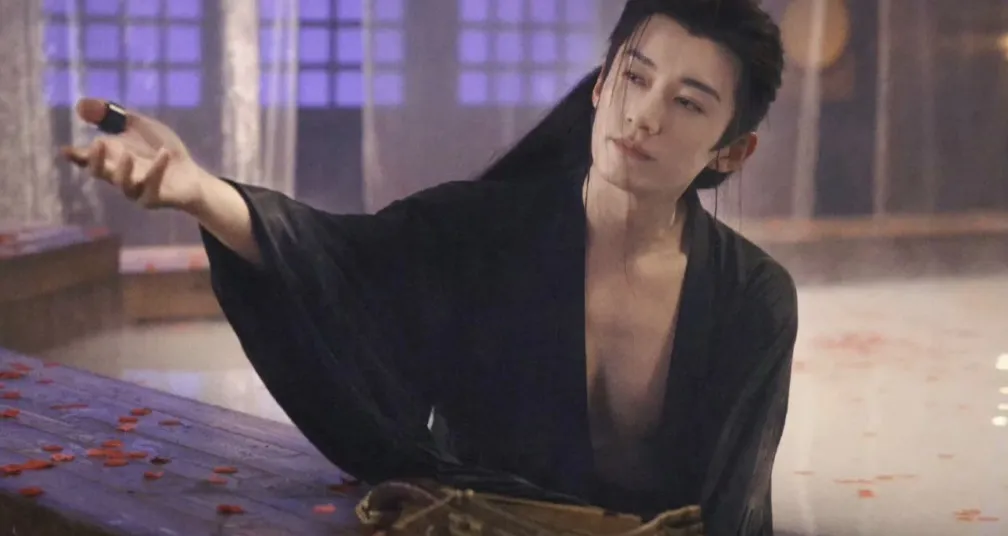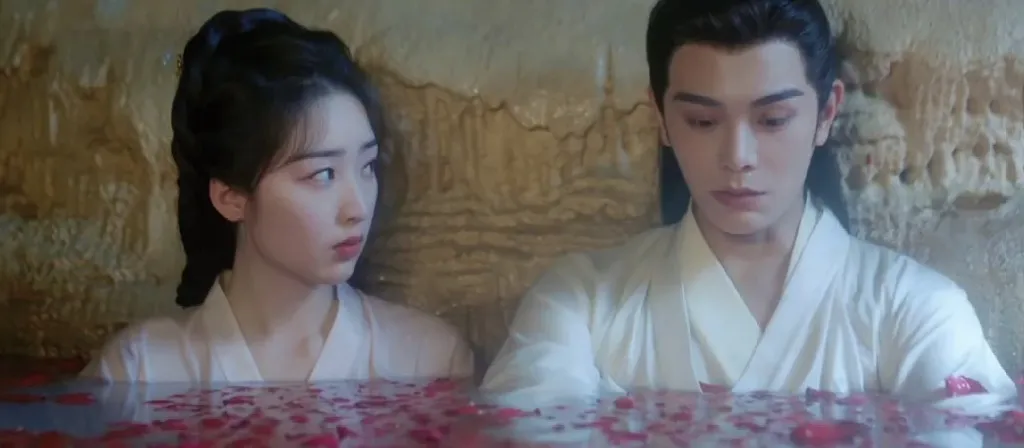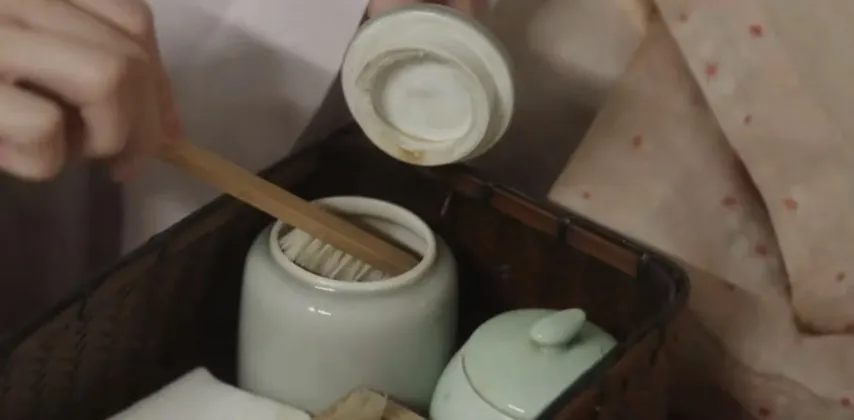
Who in Their Right Mind Takes a Bath with Clothes On? In current historical dramas, bathing scenes often show characters entering the bath fully clothed, with just a tub in sight. Does it mean ancient people just rinsed off? Netizens note that earlier films and TV shows depicted bathing more realistically, while modern ones seem overly reserved. It's not only about clothing; the bathing set - ups are also disappointingly simplistic.
Let's clarify: bathing wasn't as basic as it's often shown. Besides the tub, ancient bathing rituals involved tools like scrubbing cloths and herbal cleansers. Cleanliness was more than a quick rinse. Earlier productions, whether ancient or modern, often followed visual logic. Actors wore undergarments and used petals or other coverings to maintain modesty. Though mocked, these scenes created many iconic moments.

In ancient times, bathing was not just for hygiene; it was a sacred ritual. As the saying goes, "One who washes their hair must tidy their hat; one who bathes must freshen their clothes." The term "沐浴" (bathing) was divided into "沐" (washing hair) and "浴" (washing the body). According to "The Book of Rites", people washed their hair every three days and their bodies every five, though it varied by individual.
Full - body soaking was a luxury for royalty and nobility. Commoners faced constraints like water scarcity and lack of fuel for heating. Most people chose standing baths to save water and only took full immersion baths in rivers during suitable weather. Wealthier households had more elaborate set - ups, including toothbrushes, shower - like devices, and scrubbing stones (similar to modern facial brushes but larger and used on the body, dating back to the Shang Dynasty).

Cleansing products evolved. There was plant ash in ancient times, soapberries in the Wei - Jin period, herbal beans in the Tang Dynasty (some scented for a fragrant soak), and soap in the Southern Song Dynasty (a blend of herbal beans and soapberries with medicinal herbs). By the Ming Dynasty, innovative formulas like "胰子" emerged. The elite used new inventions, while commoners relied on older, cheaper methods.
Public bathhouses, known as "香水行", became popular in the Song Dynasty. They offered services like scrubbing, haircuts, and foot care, similar to modern spas. "The Mystery of the Qingming Scroll" features a "bath center". Records from the Yuan Dynasty show pricing: 5 coins for a bath, 2 for a back scrub, 5 for hair combing, 2 for a shave, and 5 for a pedicure, totaling 19 coins for a full package (no discounts!).
For modern productions, balancing authenticity with censorship is challenging. Shows like "Love Under the Moon" use flowers and set design to create ambiance and avoid sensitive shots, which demands more from actors and crew. Contemporary dramas often imply bathing with head - and - shoulder shots. The trend of clothed bathing in historical dramas makes audiences question common sense. Whether due to caution or lack of skill, sacrificing logic for metaphor may distort cultural representation, especially as Chinese dramas go global. Misleading portrayals of "strange" or "primitive" bathing customs could have a negative impact.

